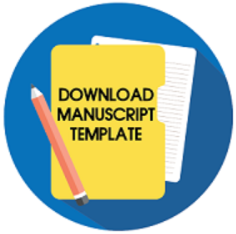Scientific-based approach pictorial storybook for eliciting creative thinking and collaborative skills
Downloads
Downloads
Al-Somadi, M. M. F. (2012). The effect of a story-based programme on developing moral values at the kindergarten stage. Interdiciplinary Journal of Contemporary Research in Buisiness, 4(7), 534–559.
Ansari, S. U., & Malik, S. K. (2013). Image of an effective teacher in 21st century classroom. Journal of Educational and Instructional Studies in the World, 3(4), 61–68. http://www.wjeis.org/FileUpload/ds217232/File/08.ansari.pdf
Anwar, M. N., Aness, M., Khizar, A., Naseer, M., & Muhammad, G. (2012). Relationship of creative thinking with the academic achievements of secondary school students. International Interdisciplinary Journal of Education, 1(3), 44–47. http://wsw.iijoe.org/volume1/IIJE_01_03_12.pdf
Arends, R. I., & Kilcher, A. R. (2010). Teaching for student learning: Becoming an accomplished teacher. In Routledge. Taylor & Francis e-Library. https://doi.org/10.4324/9780203866771
Budiarti, W. N., & Haryanto, H. (2016). Pengembangan media komik untuk meningkatkan motivasi belajar dan keterampilan membaca pemahaman siswa kelas IV. Jurnal Prima Edukasia, 4(2), 233–242. https://doi.org/10.21831/jpe.v4i2.6295
Bybee, R. W. (2002). Learning science and the science of learning: Science educators' essay collection.
Daryanto, D. (2014). Pendekatan pembelajaran saintifik Kurikulum 2013. Gava Media.
Elia, I., van den Heuvel"Panhuizen, M., & Georgiou, A. (2010). The role of pictures in picture books on children's cognitive engagement with mathematics. European Early Childhood Education Research Journal, 18(3), 275–297. https://doi.org/10.1080/1350293X.2010.500054
Fani, R. A., & Sukoco, P. (2019). Volleyball learning media using method of teaching games for understanding adobe flash-based. Psychology, Evaluation, and Technology in Educational Research, 2(1), 34. https://doi.org/10.33292/petier.v2i1.6
Felder, R. M., & Brent, R. (1996). Navigating the bumpy road to student-centered instruction. College Teaching, 44(2), 43–47. https://doi.org/10.1080/87567555.1996.9933425
Fogarty, R. (2009). How to integrate the curricula. Corwin.
Gall, M. D., Gall, J. P., Borg, W. R. D., & Gall, J. P. (2003). Educational research: An introduction (7th ed.). Pearson Education Inc.
Huck, C. S., Hepler, S., Hickman, J., & Kiefer, B. Z. (2000). Children's literature in the elementary school. Mcgraw-Hill College.
John, Y. J. (2015). A "new" thematic, integrated curriculum for primary schools of Trinidad and Tobago: A paradigm shift. International Journal of Higher Education, 4(3). https://doi.org/10.5430/ijhe.v4n3p172
Lin, R. (2012). A study of creative thinking for children's picture book creation. IERI Procedia, 2, 36–42. https://doi.org/10.1016/j.ieri.2012.06.048
Peraturan Menteri Pendidikan dan Kebudayaan Republik Indonesia Nomor 69 Tahun 2013 tentang kerangka dasar dan struktur kurikulum sekolah/madrasah aliyah menengah atas, Pub. L. No. 67, Peraturan Menteri Pendidikan dan Kebudayaan Republik Indonesia (2013).
Peraturan Menteri Pendidikan dan Kebudayaan nomor 103, tahun 2014, tentang pembelajaran pada pendidikan dasar dan pendidikan menengah, Pub. L. No. 103, Peraturan Menteri Pendidikan dan Kebudayaan Republik Indonesia (2014).
Mitchell, D., Waterbury, P., & Casement, R. (2002). Children's literature: An invitation to the world. Allyn & Bacon.
Ojose, B. (2008). Applying Piaget's theory of cognitive development to mathematics instruction. The Mathematics Educator, 18(1). http://tme.journals.libs.uga.edu/index.php/tme/article/view/193
Oppezzo, M., & Schwartz, D. L. (2014). Give your ideas some legs: The positive effect of walking on creative thinking. Journal of Experimental Psychology: Learning, Memory, and Cognition, 40(4), 1142–1152. https://doi.org/10.1037/a0036577
Pehrsson, D.-E., & Pehrsson, R. S. (2007). Language fantasy approach: A therapeutic intervention by creating myths with children. Journal of Poetry Therapy, 20(1), 41–49. https://doi.org/10.1080/08893670701254768
Piirto, J. (2011). Creativity for 21st century skills : how to embed creativity into the curriculum. SensePublishers.
Prasetyo, Z. K. (2011). Pengembangan perangkat pembelajaran sains terpadu untuk meningkatkan kognitif, keterampilan proses, kreativitas serta menerapkan konsep.
Pringle, R., & Lamme, L. (2005). Using picture storybooks to support young children's science learning. Reading Horizons: A Journal of Literacy and Language Arts, 46(1). https://scholarworks.wmich.edu/reading_horizons/vol46/iss1/2
Pujayanto, P., Supurwoko, S., Radiyono, Y., & Adi, D. W. (2017). Development of problem-based learning material for physics mathematics and its implementation. International Journal of Science and Applied Science: Conference Series, 1(1), 16. https://doi.org/10.20961/ijsascs.v1i1.5104
Republik Indonesia. (2002). Undang-Undang Dasar Negara Republik Indonesia Tahun 1945. Sekretariat Jenderal MPR RI.
Russ, S. W., & Wallace, C. E. (2013). Pretend play and creative processes. American Journal of Play, 6(1), 136–148.
Said, I. M., Sutadji, E., & Sugandi, M. (2016). The scientific approach-based cooperative learning tool for vocational students vocation program of autotronic (automotive electronic) engineering. IOSR Journal of Research & Method in Education (IOSR-JRME), 6(3), 67–73. https://doi.org/10.9790/7388-0603046773
Saputro, H. B., & Soeharto, S. (2015). Pengembangan media komik berbasis pendidikan karakter pada pembelajaran tematik-integratif kelas IV SD. Jurnal Prima Edukasia, 3(1), 61–72. https://doi.org/10.21831/JPE.V3I1.4065
Singaravelu, G. (2012). Discovery learning strategies in English. Journal on English Language Teaching, 2(1), 57–62. https://doi.org/10.26634/jelt.2.1.1620
Suprijono, A. (2009). Cooperative learning: teori & aplikasi PAIKEM. Pustaka Pelajar.
Suwandi, I. K., & Masruri, M. S. (2016). Pengembangan picture book sejarah nasional dengan pendekatan tematik terpadu untuk kelas IV sekolah dasar. Jurnal Prima Edukasia, 4(1), 79. https://doi.org/10.21831/jpe.v4i1.7747
Toros, K., & Medar, M. (2015). Social work students' thoughts on self-reflection: A qualitative study based on reflective journaling. International Journal of Humanities and Social Science, 5(3).
Turan, F., & Ulutas, I. (2016). Using storybooks as a character education tools. Journal of Education and Practice, 7(15). https://www.iiste.org/Journals/index.php/JEP/article/view/30887
Tí¼rkmen, H., & Sertkahya, M. (2015). Creative thinking skills analyzes of vocational high school students. Journal of Educational and Instructional Studies, 5(1), 74–84. http://www.wjeis.org/FileUpload/ds217232/File/10.hakan_turkmen..pdf
Ward, H. (2010). Buku pengajaran sains berdasarkan cara kerja otak. Indeks.
Widoyoko, E. P. (2012). Teknik penyusunan instrumen penelitian. Pustaka Pelajar.
The copyright of the received article shall be assigned to the journal as the publisher of the journal. The intended copyright includes the right to publish the article in various forms (including reprints). The journal maintains the publishing rights to the published articles.

Jurnal Prima Edukasia by http://journal.uny.ac.id/index.php/jpe/index is licensed under a Creative Commons Attribution-ShareAlike 4.0 International License.


























